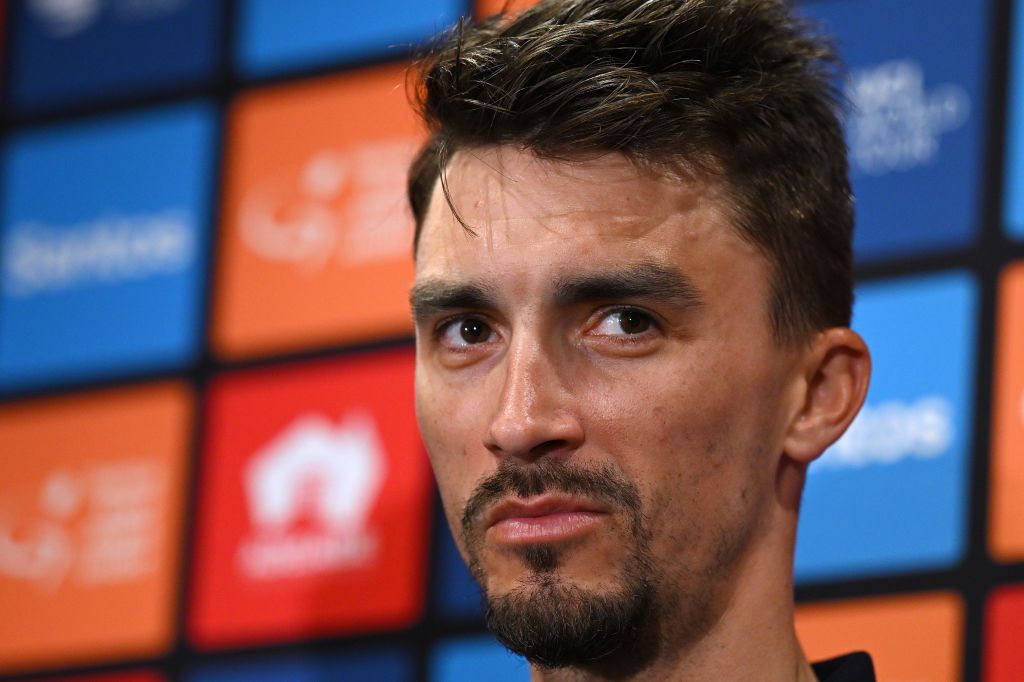Julian Alaphilippe arrived at the Tour Down Under with two prominent veins popping out of his right temple. It wasn’t a stress response to Soudal-Quick-Step team boss Patrick Lefevere’s criticism of his recent results – the Frenchman says he doesn’t care about that – rather an indication of his shape. Alaphilippe’s veins were visible because he was lean.
Even race director Stuart O’Grady had noted how fit Alaphilippe looked, when asked to name a favourite in the lead-up to the men’s WorldTour race.
Alaphilippe didn’t do anything differently over the European winter. In fact, he stripped his preparations for what could prove to be a defining 2024. At the end of which he’ll be out of contract, with his future in the sport still to be decided.
“I did nothing crazy this winter, just normal training, no big hours, no crazy intensity because the most important [thing] for me was to build a good base and to improve from now to my goals,” Alaphilippe said in Adelaide during a roundtable interview with several media, including Cyclingnews.
“If I take simple things, like don’t change your training, or change nothing, just keep it simple, like always I did before, I knew it will be a good base to improve, so this is what I did.”
The two-time former world champion returned to the Tour Down Under for the first time since 2014, the year he turned pro, not to win, but to stay in the “red zone” at the pointy end of the last two hilly stages that suited puncheurs and climbers.
He did that, and even surprised himself, finishing fourth on stage five to Willunga Hill and sixth on the final stage to Mount Lofty. He finished sixth overall, at 33 seconds, the same as Adam Yates, who was leading Jayco AlUla.
“Maybe for a lot of people it can be a disappointment but for me I take it like a really big thing,” Alaphilippe said of his results.
“I was more focused on the efforts. I was just focused on staying in the red zone, and it was a long time ago that I fought like this at this point of the race.
“I know myself, like, one year ago, for sure in this situation, I would feel directly that I cannot win, and I will attack or do two or three big efforts and explode and drop. I used to destroy myself.
“[On Willunga Hill] I was in the mood to really fight, to go in the red zone and try to stay there. I knew it was going to be difficult to win because the guys who win here train a bloc’ (full on) in the winter, from November or even…
Click Here to Read the Full Original Article at CyclingNews RSS Feed…

